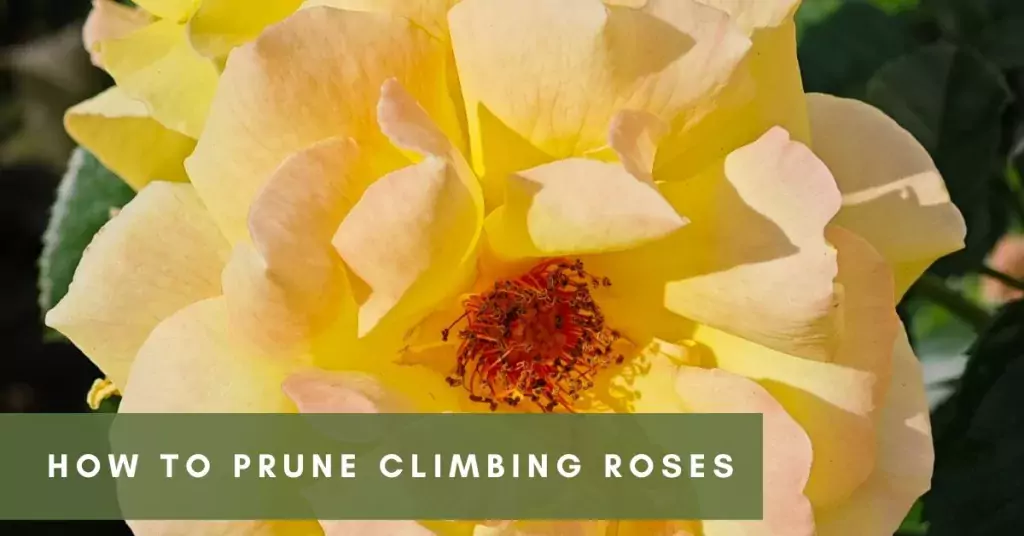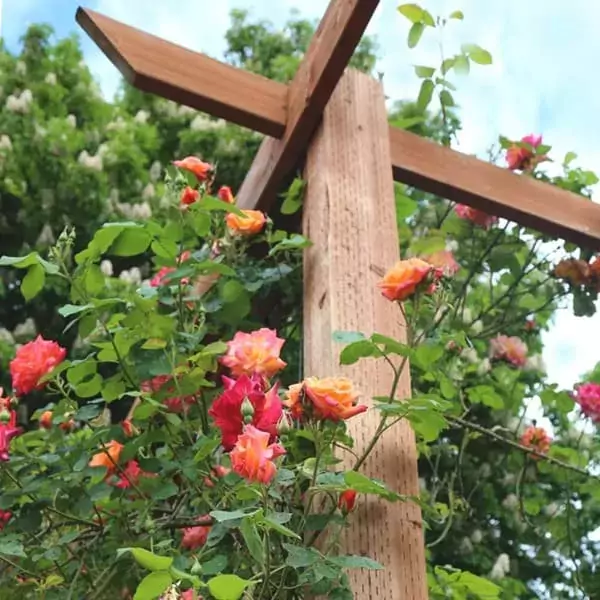Climbing roses are a captivating addition to any garden, bringing forth a burst of color, fragrance, and charm. However, their beauty thrives on proper care, and pruning is crucial in maintaining their health and enhancing their flowering potential. Whether you’re a seasoned horticulturist or an aspiring green thumb, honing the skill of pruning climbing roses is the key to unleashing a profusion of lively blossoms that will metamorphose your vertical haven.
Understanding the "Whys" and "When" to prune climbing roses
Before diving into the practicalities, it’s essential to understand the fundamental reasons behind pruning climbing roses.
The Nature of Climbing Roses: Like their bush counterparts, Climbing roses boast long canes that can reach impressive heights. Understanding their growth pattern is crucial for effective pruning. These roses produce flowers on the current season’s growth, making timely pruning pivotal for continuous blooms.
Pruning serves a multitude of purposes, including:
- Encouraging new growth: Pruning stimulates the production of new shoots, resulting in a denser and more vigorous plant with increased flowering potential.
- Maintaining structure and shape: By strategically removing unwanted branches, you can guide the climbing rose to follow your desired training structure (trellis, fence, etc.) and prevent it from becoming overgrown and unmanageable.
- Promoting air circulation and sunlight penetration: Pruning helps to remove congested growth, allowing for better air circulation and increased sunlight penetration throughout the plant. This practice aids in averting diseases and promotes the robust development of blossoms, ensuring a flourishing and disease-resistant floral display.
- Removing dead, diseased, or damaged branches: Pruning eliminates these problematic elements, preventing the spread of disease and promoting overall plant health.
Timing is Everything for prune climbing roses
Spring Awakening:
Pruning climbing roses is most effective in early spring, just as the buds swell. This timing allows the roses to channel their energy into producing new growth and ensures a bountiful display later in the season.
The Art of Deadheading:
Removing spent flowers, known as deadheading, is a fundamental aspect of climbing rose care. Trimming away spent flowers, known as deadheading, prompts the plant to redirect its energy toward generating fresh blooms instead of investing resources in seed production. Using sharp pruning shears, snip the spent flowers just above the first five leaflets.
Determining the ideal moment for pruning climbing roses is contingent upon the climate nuances of your region and the distinctive characteristics of the rose variety flourishing in your garden. In temperate regions with mild winters, late winter or early spring (typically between February and March) is generally considered the ideal window, as the plant is still dormant and less susceptible to damage. In colder climates with harsher winters, it’s best to wait until late spring (around April or May) when the risk of frost has subsided.
Gearing Up for Success: Essential Tools and Techniques
Now that you know “why” and “when,” let’s delve into the practical aspects of pruning. Here’s what you’ll need:
- Sharp pruning shears or bypass pruners:Ensure they are clean and well-maintained for precise cuts and to minimize damage to the plant.
- Heavy-duty gloves:Protect your hands from thorns and potential cuts.
- Optional: Loppers:For thicker branches that cannot be easily handled by pruning shears.
- Disinfectant:Clean your pruning tools before and after each use to prevent the spread of disease.
Prune Climbing Roses:
First-Year Pruning:
- Allow the rose to establish its root system.
- Focus on training the main stems horizontally along a support structure.
- Remove any damaged, weak, or dead stems.
Second-Year Pruning:
- Retain 3–5 strong main stems as your framework.
- Prune lateral (side) stems to 2–3 buds or about 6 inches to encourage flowering.
Subsequent Years:
- Remove one or two of the oldest canes to stimulate new growth.
- Trim lateral stems back to 2–3 buds annually after flowering.
- Train new shoots horizontally for more blooms.
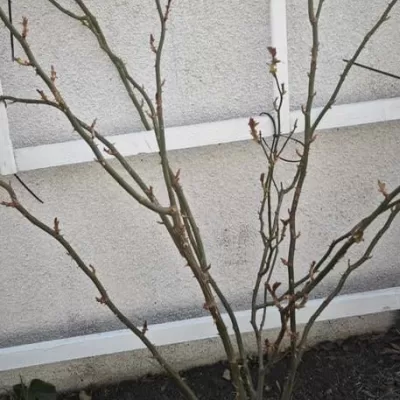
Eden rose. photo by Ann Devis
Step-by-Step Guide to Pruning Your Climbing Rose
- Start by removing dead, diseased, or damaged branches:Look for branches that are brown, brittle, or have visible signs of disease. Cut them back to their point of origin, ensuring a clean cut.
- Thin-outcongested growth:Identify and remove any weak or spindly growth that detracts from the overall structure and hinders air circulation.
- Prune flowered lateral shoots:These side shoots have already bloomed. Cut them back by about two-thirds of their length to encourage new growth and subsequent flowering.
- Manage main stems:For established climbing roses, you may need to selectively prune some of the older, thicker canes (around 3-4 years old) at the base of the plant. This stimulates the growth of new, more vigorous shoots that will produce the most flowers. Aim to leave 5-7 strong, healthy main canes.
- Tie in remaining canes:After completing the pruning, carefully train the remaining canes to follow your desired support structure. Use soft or plant ties to secure them in place without causing damage.
Stem Orders Explained:
First-Order Stems:
- The main primary canes grow directly from the base or rootstock.
- These form the structural framework.
Second-Order Stems:
- Lateral branches emerge from first-order stems.
- Prune these to 2–3 buds to encourage flowering.
Third-Order Stems:
- Small shoots that develop from second-order stems.
- These bear flowers and should be lightly trimmed for maintenance.
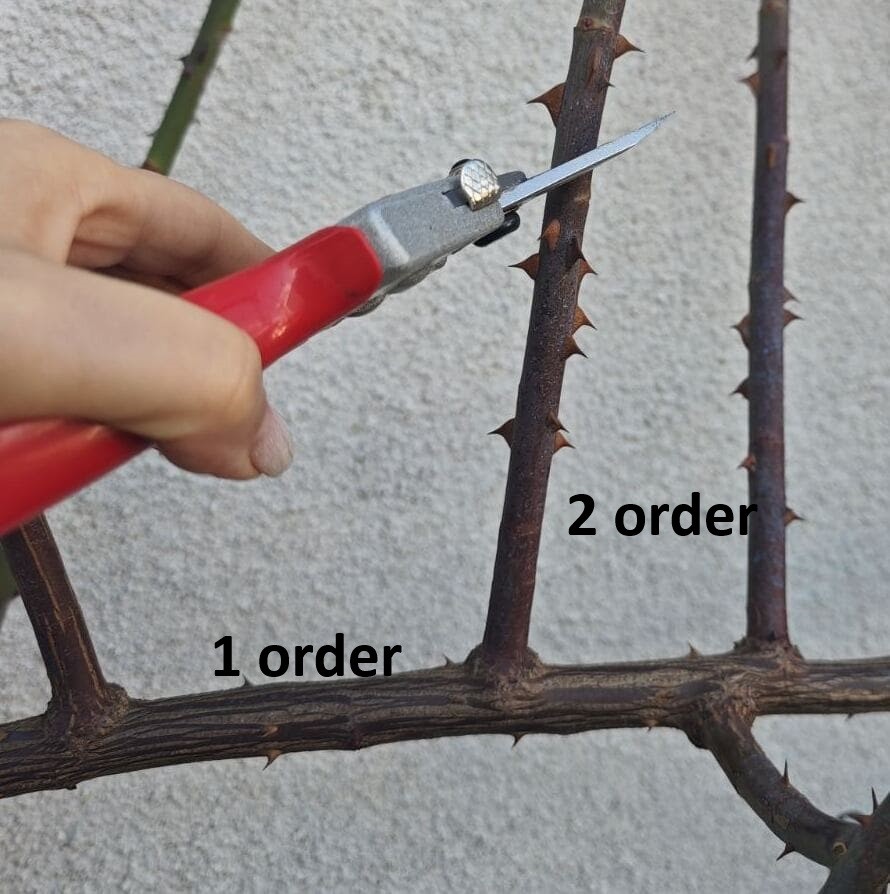
Pruning Wicker Roses for Maximum Flowering:
- After Flowering:
- Remove spent blooms to direct energy toward new growth.
- Trim back lateral stems lightly.
- Annual Maintenance:
- Cut back up to one-third of the oldest canes to the base.
- Remove crossing stems and those growing inwards.
Pruning Specific Groups:
Climbers:
- Train the main canes horizontally for a fan shape.
- Annually prune lateral shoots to 2–3 buds.
- Remove old or weak canes after blooming.
Ramblers:
- They are best pruned after flowering as they bloom on the previous year’s wood.
- Remove about one-third of the oldest canes.
- Thin out crowded growth to improve air circulation.
Rablings:
- It’s a mix between climbers and ramblers.
- Prune in late winter or early spring.
- Train and thin as needed, following the principles of both groups.
Examples of climbing rose varieties by group
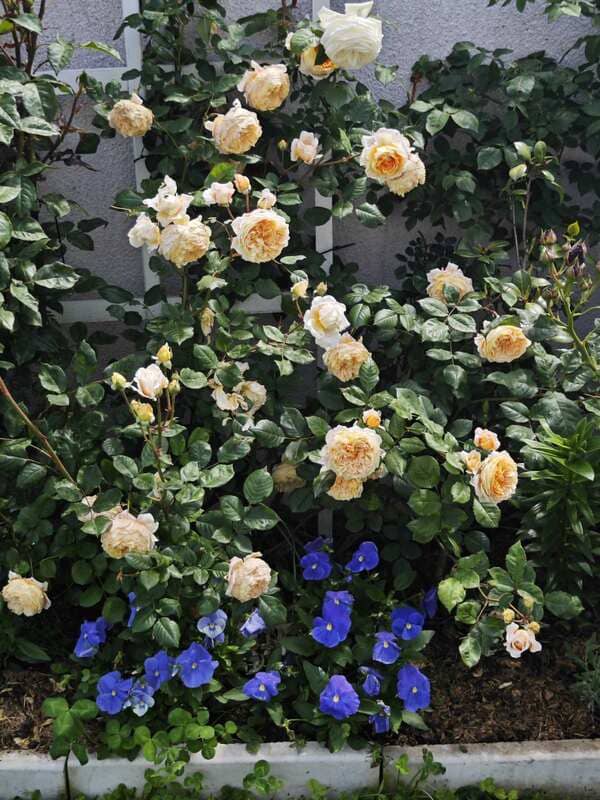
Crown Princess Margarita rose. Rambling. Photo by Ann Devis
Ramblers
- Albertine
- Wedding Day
- Rambling Rector
- Excelsa
- Félicité et Perpétue
- Malvern Hills
- The Albrighton Rambler
- Snow Goose
- Francis E. Lester
- Kew Rambler
Rablings
- Ghislaine de Féligonde
- Super Dorothy
- Lady of the Lake
- The Generous Gardener
- Francis E. Lester
- Ghislaine de Féligonde
- Claire Austin
- The Generous Gardener
- Mortimer Sackler
- Lady of the Lake
Climbers
- New Dawn
- Iceberg Climbing
- Golden Showers
- Eden Climber
- Climbing Cecile Brunner
- Tess of the d’Urbervilles
- James Galway
- Strawberry Hill
- Gertrude Jekyll
- Bathsheba
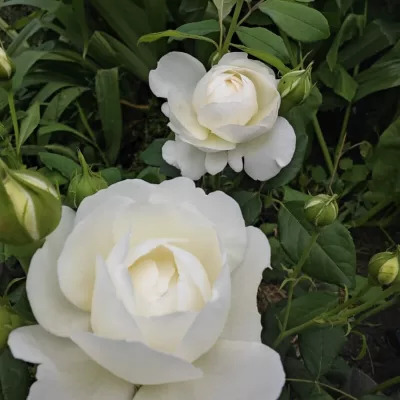
Claire Austin rose. photo by Ann Devis
Beyond the Basics: Additional Tips for Success
Dealing with Overgrown Canes: Climbing roses can become a tangle of unruly canes if left unchecked. Identify the oldest and least productive canes and prune them back to the base. Enabling the plant to channel its energy towards younger and more robust canes fosters a healthier growth trajectory, leading to abundant, vibrant, and flourishing flowers.
- When pruning climbing roses, remember the three Ds – remove any dead, damaged, or diseased wood.
- Always make clean cuts: Use sharp tools and cut at a 45-degree angle above an outward-facing bud. This promotes proper healing and encourages new growth in the desired direction.
- Avoid excessive pruning: Remember, less is often more. Excessive pruning can reduce flowering potential.
- Be mindful of your specific rose variety: Different climbing rose varieties may have slightly different pruning requirements. Research the specific needs of your particular rose for the best results.
Enjoy the process!
Pruning should be a mindful and enjoyable experience. Take your time, observe your rose, and make decisions to enhance its health and beauty.
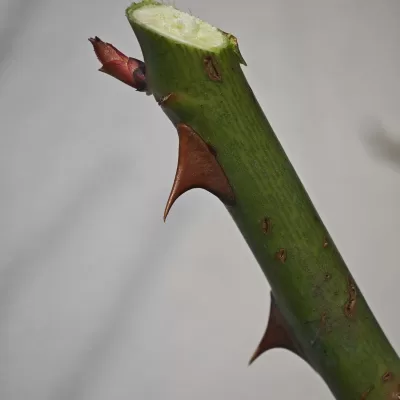
Special Considerations to prune climbing roses
Repeat-Blooming Varieties: If you have repeat-blooming climbing roses, midsummer pruning can be beneficial. Trim back the spent blooms and shape the plant as needed. This encourages a second flush of flowers later in the season.
Climbing Roses on Structures: Prune to maintain the desired form for climbing roses adorning structures like trellises or arches—secure canes to the structure to encourage vertical growth, creating a stunning visual display.
By adhering to these guidelines and integrating these supplementary insights, you’re on the path to attaining expertise in pruning climbing roses. Remember, caring for climbing roses is an ongoing process, and with consistent attention and proper pruning techniques, you can ensure that your garden continues to be adorned with a breathtaking display of floral splendor.

Get Your Free Lunar Gardener's Calendar 2025!
Join the Lunar Gardening Revolution! Subscribe now to receive our exclusive Free Lunar Gardener’s Calendar for 2025. Harness the power of the moon to optimize your planting, nurturing, and harvesting.

